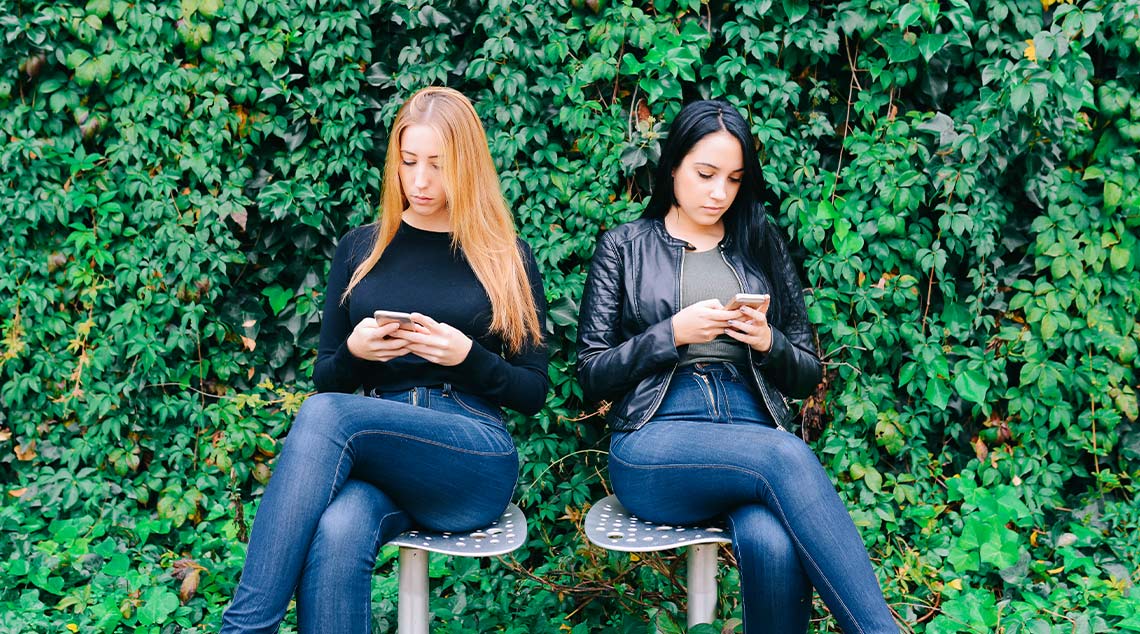Unplugged: Why you may need a digital fast – and how to do it
How much time have you spent scrolling on your smartphone or typing on your tablet today? If the answer is “too much”, it might be time for a digital fast.
The average person spends more than three hours a day interacting with digital devices outside of work, according to US research, and it’s coming at a cost to our health.
In fact, technology has been described as the “new drug” of the 21st century, with too much screen time being blamed for rising depression, anxiety and insomnia.
If you find yourself overly attached to your devices, spending far more time than you should browsing or scrolling, you may need a digital fast.
So, what is a digital fast?
Digital fasting, or a digital detox, involves unplugging from devices that connect to the internet for set blocks of time each day.
“It describes a period of abstinence from surfing the net, online shopping, social media, consuming online adult content, gaming, gambling and emailing,” psychologist Jane O’Keeffe says.
“It’s about gaining a better understanding of your relationship to technology.”
Signs you need a digital fast
Jane, who is a clinical consultant at Sydney’s South Pacific Private addiction treatment centre, says an unhealthy relationship with technology can manifest in different ways:
You’ve developed unhelpful habits
These may include regularly losing hours of your day down online rabbit holes, checking your phone multiple times an hour, or always comparing yourself to others on social media.
You’re missing out
Excessive amounts of time online can come at the expense of other activities such as time with family and friends, social commitments, self-care and exercise.
Jane says it’s important to ask yourself how you want to be spending your precious time.
You struggle without your devices
“You may develop an unhealthy psychological dependence (on) your devices, which leaves you feeling uneasy or anxious when away from them,” she says.
“Perhaps you come away from social media feeling worse about yourself after comparing yourself to others – this can lead you to feel anxious, overwhelmed and overloaded.”
How to do a digital fast
This isn’t a weight-loss regimen, so there are no set rules around fasting periods.
Even minimising your screen time by an hour or two a day when waking up and before sleep is a good start, according to the Youth Support and Advocacy Service (YSAS).
Spokesperson David Jeffery advises setting achievable goals and building up to longer fasts over time.
“Having a constant stream of content on a smartphone or device can make it more difficult to get rest from our days and process what has happened or plan for the future,” David says.
Putting devices in a different room when you sleep and leaving them at home when going out can help you stick to your fast.
Keeping track of your daily screen time, deleting the most time-consuming apps and scheduling in more time with friends can also be useful.
“People need to be honest with themselves if using digital devices is compulsive (or) excessive, or supportive to their goals in life,” Jane says.
Benefits of a digital fast
According to our experts, some of the positive effects of loosening your grip on technology include boosted motivation, greater mental clarity and reduced anxiety.
David says people may notice positive changes within a day, or up to a week, depending on their level of addiction.
“An unexpected benefit could also be a newfound appreciation for boredom and the joy in slowing down,” he says.
Read more on digital habits and wellbeing:
- Why digital hoarding is the new clutter
- Is your phone making you a bad parent?
- 7 surprising ways your phone may be harming you
- Why you should step away from that social media quiz
- 8 things parents should know about screen time
- Is your phone taking a toll on your skin?
Written by Elissa Doherty.






